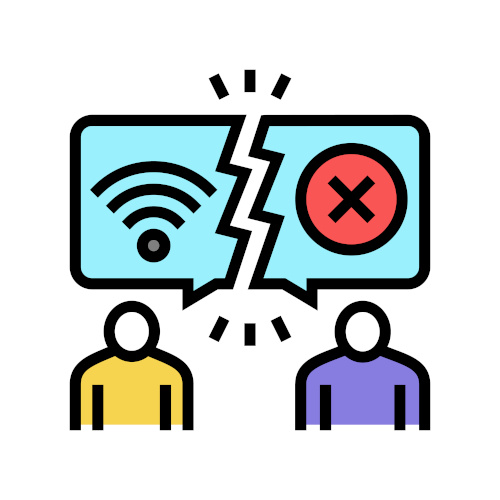Our society relies on the internet for education, jobs, and personal needs, yet our country’s digital divide has been an ongoing issue, affecting the 14.5 million Americans who don’t have access to broadband internet. This issue is not just limiting education access, but it’s also contributing to an ongoing workforce crisis. It’s time to recognize that equal access to high-speed internet is essential, and urgent action is needed.
The digital divide refers to the gap between those who have access to modern information and technology that support info-sharing and those who have little to no access. This gap can be attributed to various factors, such as socio-economic status, geographic location, age and race/ethnicity, and has significant implications for education access and workforce development in the United States.
According to a recent Pew Research Center Report, 43 percent of American households nationwide with income under $30,000 don’t have access to reliable internet services at home and 41 percent don’t have any sort of device/computer. Along with that, our country’s digital divide is especially evident in rural areas, where 60 percent of rural Americans view the lack of high-speed internet as a problem. This often stems from the fact that rural areas are less likely to be wired for broadband services, therefore resulting in slower internet speeds.
From seeking jobs to finding healthcare to furthering education to career readiness, high-speed internet has become essential to meeting basic needs and quality of life. Although we’re seeing more companies getting back into the office, 26 percent of U.S. employees still work remotely as of October of 2022 and it’s expected that 36.2 million American employees will be working remotely by 2025. Students who may also be full-time workers are finding themselves not only requiring reliable internet access to complete their coursework and studies, but to remain employed and financially secure.
Additionally, many people who have lost their jobs due to the pandemic are seeking ways to return to school to broaden their opportunities or begin a new career path. However, the loss of income sources adds an additional layer of difficulty to affording broadband internet, which is required for online learners.
In addition, most jobs in the U.S. require a bachelor’s degree (75 percent), while only 40 percent of potential applicants have one. For adult learners or those with barriers to education access (time, location, cost or other), earning a degree online is the only option to leveling up their employment status. How many could earn or finish their education if they had access to high-speed internet? It should be widely understood that online resources are required to re-tool and upskill, and high-speed internet access is a non-negotiable in that effort.
Higher education institutions are limited in their ability to expand access to education to those who would benefit most if equitable internet access isn’t addressed. To address these personal, educational, economic, and workforce development needs, there needs to be a baseline level of accessibility for all. Overall, the digital divide crisis will certainly affect our country’s future workforce if equal access to reliable internet isn’t addressed. It’s time for leaders – in public and private sectors – and communities to collaborate and invest in digital infrastructure that benefits individuals pursuing an online education and looking to boost career readiness.
By closing the digital divide and increasing access to online education, we in turn support workforce development in communities across the country. Economic growth starts with the investment and growth of individuals through education and skilling up.
Leaders everywhere must be more vocal about equal access to broadband internet and support actionable efforts to find solutions to shrink the country-wide digital divide.
Related:
Free internet could erase the digital divide
How computer science education bridges the digital divide
- 7 reasons to ditch recipe-style science labs - November 22, 2024
- As a paradeducator, here’s how I use tech to help neurodivergent students gain agency - November 22, 2024
- 5 ways school districts can create successful community partnerships - November 21, 2024


